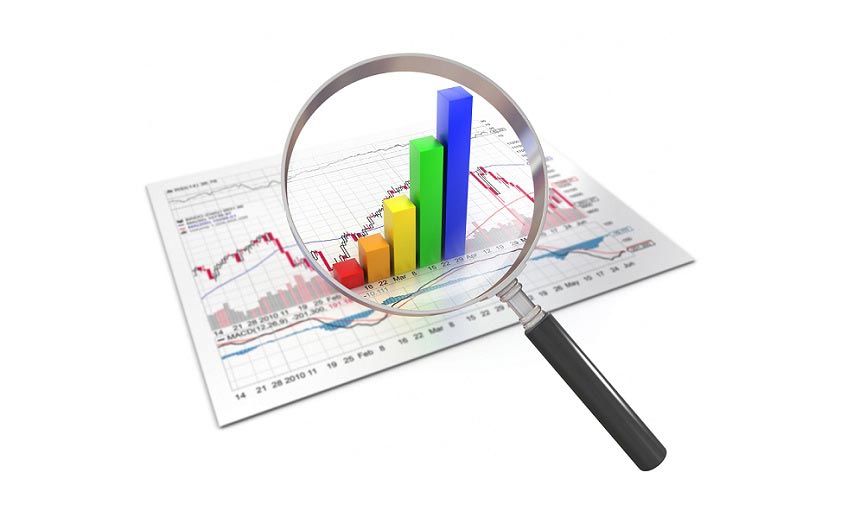Quantitative Analysis of Hedge Funds
Aug 30, 2022 By Triston Martin
While the mutual fund and hedge fund may be evaluated using similar methods and metrics, hedge funds require an additional degree of detail to deal with their degree of complexity and their different expected returns. They are typically only accessible to accredited investors as they are subject to lesser SEC rules than the other types of funds.
Absolute and Relative Returns
Similar to the analysis of the performance of mutual funds, Hedge funds must be evaluated for absolute and relative performance. But, due to the diversity in hedge funds' strategies and the distinctiveness of every hedge fund, an understanding of the various kinds of returns is required to identify them.
Absolute returns give investors an idea of how to place the fund relative to traditional investments. Also called the term "total return," the absolute return measures the gains or losses that the fund. For example, a hedge fund with moderate and consistent returns is an ideal alternative to fixed income investment for emerging market equity which could be replaced with a high-return macro global fund.
Returns, in contrast, can allow an investor to evaluate a fund's value compared to similar investments. The comparables could be mutual funds, hedge funds, or even specific indexes an investor is trying to emulate. The most important aspect of evaluating the relative return is to evaluate performance over a variety of times, like three, one, and five-year-annualized returns. Additionally, the returns must be evaluated in relation to the risk associated with every investment.
The best way to determine the performance of a group is to create an inventory of peers that could comprise a cross-section of mutual funds that are traditional, fixed-income, or equity indexes and hedge funds using similar strategies. A quality fund must be in the top quartiles for every studied period to prove its ability to generate alpha.
Measuring Risk
Analyzing quantitatively without considering the possibility of risk is comparable to traversing a busy street with a blindfold. The basic financial theory suggests that taking risks can only achieve high returns. Therefore, although a fund might show impressive returns, the investor must incorporate risk into their analysis to assess the risk-adjusted performance of the fund as well as how it is compared to different investments. There are various metrics employed to assess the risk of investment:

Standard Deviation
One benefit of using standard deviation as a risk measurement is its simplicity of calculation and the simple concept of the regular return distribution. However, it is the reason behind its inability to describe the inherent risks inherent in hedge funds. Many hedge funds do not have symmetrical returns along with the typical deviation measure can be used to conceal the possibility of huge losses.
Value at Risk
Value at risk is calculated using a combination of standard deviation and means. However, unlike standard deviation, it doesn't define the risk in terms of volatility but as the most significant value that is most probable to lose with a probability of five percent. When a normal distribution occurs, it is represented as the five percent left of the probabilities. The downside is that both the quantity and the likelihood could be underestimated due to the assumption that normal distributions are the best returns. However, it is important to consider this in the context of quantitative analysis; investors should consider other metrics when assessing the risk.
Sharpe Ratio
The Sharpe ratio is a well-known way to measure the risk-adjusted return used by hedge funds. The Sharpe ratio represents the number of returns earned for every level of risk taken. A Sharpe ratio higher than 1 is considered good, while ratios less than 1 are by the type of asset or investment strategy employed. In all cases, the main inputs to calculate the Sharpe ratio include the mean, standard deviation, the risk-free rate. Therefore, Sharpe ratios could be more appealing in low-interest rates and less appealing in times with higher rates.
Measuring Performance With Benchmark Ratios
To accurately gauge a fund's performance, it is essential to have a benchmark to compare with which to examine the returns. These comparison points are also known as benchmarks. There are a variety of ways to determine performance relative to the benchmark. Three of them are:
Beta

Beta is also known as systematic risk. It is the measure of the return of a fund's investment to the returns of an index. An index or market being compared has an index with a beta of one. A fund with a beta of 1.5 thus will generally yield 1.5 percent for each one percent change in the market or index. A fund that has a beta of 0.5, however, on the other hand, would be able to earn a 0.5 percent return for every one percent gain on the market.

Edward Weston Jun 29, 2021
When is the best time to buy serious illness insurance?
52303

Susan Kelly Oct 14, 2022
The 5 Essentials of an Estate Plan
76823

Susan Kelly Dec 06, 2021
House Insurance Replacement Cost: Your Questions Answered
90042

Susan Kelly Apr 27, 2023
Best Place to Buy Used Furniture Estate Sales
12096

Triston Martin Oct 13, 2022
Learn how to make money by investing in Stocks
35521

Triston Martin Aug 30, 2022
Best Banking Books 2022
44279

Triston Martin Dec 04, 2022
How to Look for Insurance Company Complaints
63699

Triston Martin Oct 02, 2022
Everything You Need to Know About the Best Passive Investing Strategy
91414